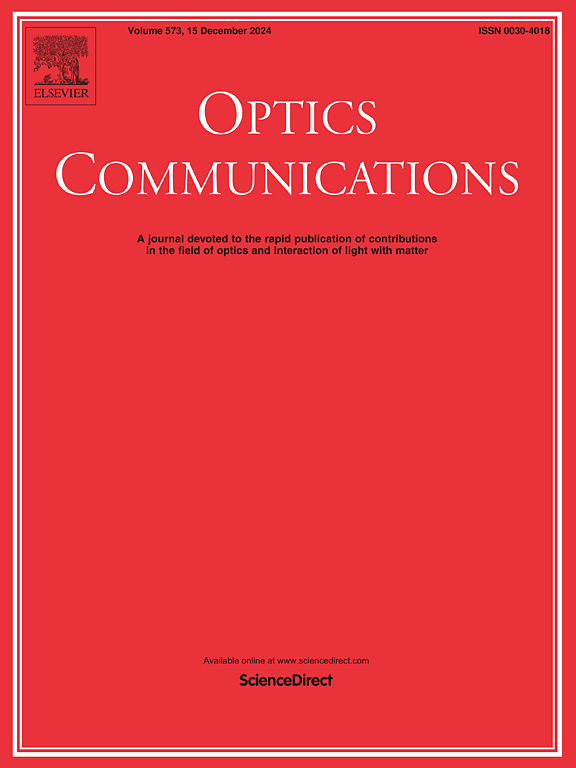MXene-based hybrid plasmonic waveguide by inserting low refractive index layer for long-range propagation
IF 2.2
3区 物理与天体物理
Q2 OPTICS
引用次数: 0
Abstract
The unique plasmonic properties of MXene in the near-infrared region have attracted increasing attention, but the surface plasmons of MXene still face problems of poor confinement and large propagation loss. In this work, an MXene hybrid planar waveguide at the communication wavelength was proposed by inserting a low refractive index layer beneath the MXene materials. The introduction of this low refractive index dielectric layer (SiO2) can dramatically expand the propagation distance and improve the localization of the electric field. When the thickness of SiO2 is only 20 nm, the propagation distance can be increased to over , which is 100 times that of MXene waveguides without SiO2 layers. MXene hybrid plasmonic waveguides are competitive compared to other typical plasmonic waveguides, such as Au, Ag, and graphene at the wavelength of . The silicon-on-insulator (SOI)-based MXene hybrid plasmonic waveguide was further designed. By optimizing the structure, the figure of merit has risen by an order of magnitude in contrast to MXene waveguide structures. These findings will contribute to the practical application and development of MXene surface plasmonic components.

求助全文
约1分钟内获得全文
求助全文
来源期刊

Optics Communications
物理-光学
CiteScore
5.10
自引率
8.30%
发文量
681
审稿时长
38 days
期刊介绍:
Optics Communications invites original and timely contributions containing new results in various fields of optics and photonics. The journal considers theoretical and experimental research in areas ranging from the fundamental properties of light to technological applications. Topics covered include classical and quantum optics, optical physics and light-matter interactions, lasers, imaging, guided-wave optics and optical information processing. Manuscripts should offer clear evidence of novelty and significance. Papers concentrating on mathematical and computational issues, with limited connection to optics, are not suitable for publication in the Journal. Similarly, small technical advances, or papers concerned only with engineering applications or issues of materials science fall outside the journal scope.
 求助内容:
求助内容: 应助结果提醒方式:
应助结果提醒方式:


